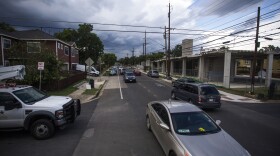The Texas economy kept humming along in 2019, though at a slightly slower tempo than in the last few years. And while Austin will continue to grow in 2020, that growth will slow to what one economist calls a "more normal" rate of growth.
Luis Torres, an economist at Texas A&M Real Estate Center, says it would be difficult for the state to continue growing at the same pace after tax breaks provided a cash infusion to households and businesses over the last year. There may not be as much of a drop-off in Austin, though, as low unemployment and investment by the tech industry continue to give the area a lift.
“Austin is one of the strongest markets and the real estate market is also doing well,” Torres said.
He anticipates real estate will continue to stay strong, with applications for new housing permits in the area increasing more than 10% in 2020 and single-family home sales continuing to help drive Austin's economy.
But there's a downside to a thriving economy and its real estate market: The city is likely to continue to grapple with affordability.
In Travis County, housing is expensive relative to average wages earned. According to ATTOM Data Solutions, a real estate database provider, homeowners in the county pay roughly 45% of their wages on mortgage, taxes and insurance. According to ATTOM's methodology, residents should not pay more than 28% of their wages on housing.
Williamson County homeowners pay 41%. Travis and Williamson Counties are high – but the highest?
“Hays County is one of the most unaffordable areas,” said Jennifer von Pohlmann, director of content and public relations with ATTOM Data Solutions. “About 52% of annualized wages are needed to buy a home.”
The story is not any better for renters. This year, rents in the Austin area had the sixth highest year-over-year increase in the nation, according to apartment finder site ApartmentList.com. But when you look at the spike over the last decade in terms of total rent paid, Austin saw the highest rent growth in the nation, real estate site Zillow.com found.
Rents for an average one-bedroom apartment in Austin have more than doubled since post-recession lows in 2011. Meanwhile, home ownership rates here have not really rebounded to what they were after the recession.
“Most of this growth in households that Austin’s had since 2010, it hasn’t been disproportionately moving into home ownership,” Jeff Tucker, an economist with Zillow, said. “So, that’s a whole lot more renter households arriving, and they’re paying more rent in Austin.”
A tighter supply of rental units is not helping to curb higher rents.
Factors that could help renters eventually move into home ownership are low interest rates on mortgages, an increase in new housing permits to start the year and changes to zoning in Austin.
Got a tip? Email Jimmy at jmaas@kut.org. Follow him on Twitter @maasdinero.
If you found the reporting above valuable, please consider making a donation to support it. Your gift pays for everything you find on KUT.org. Thanks for donating today.







